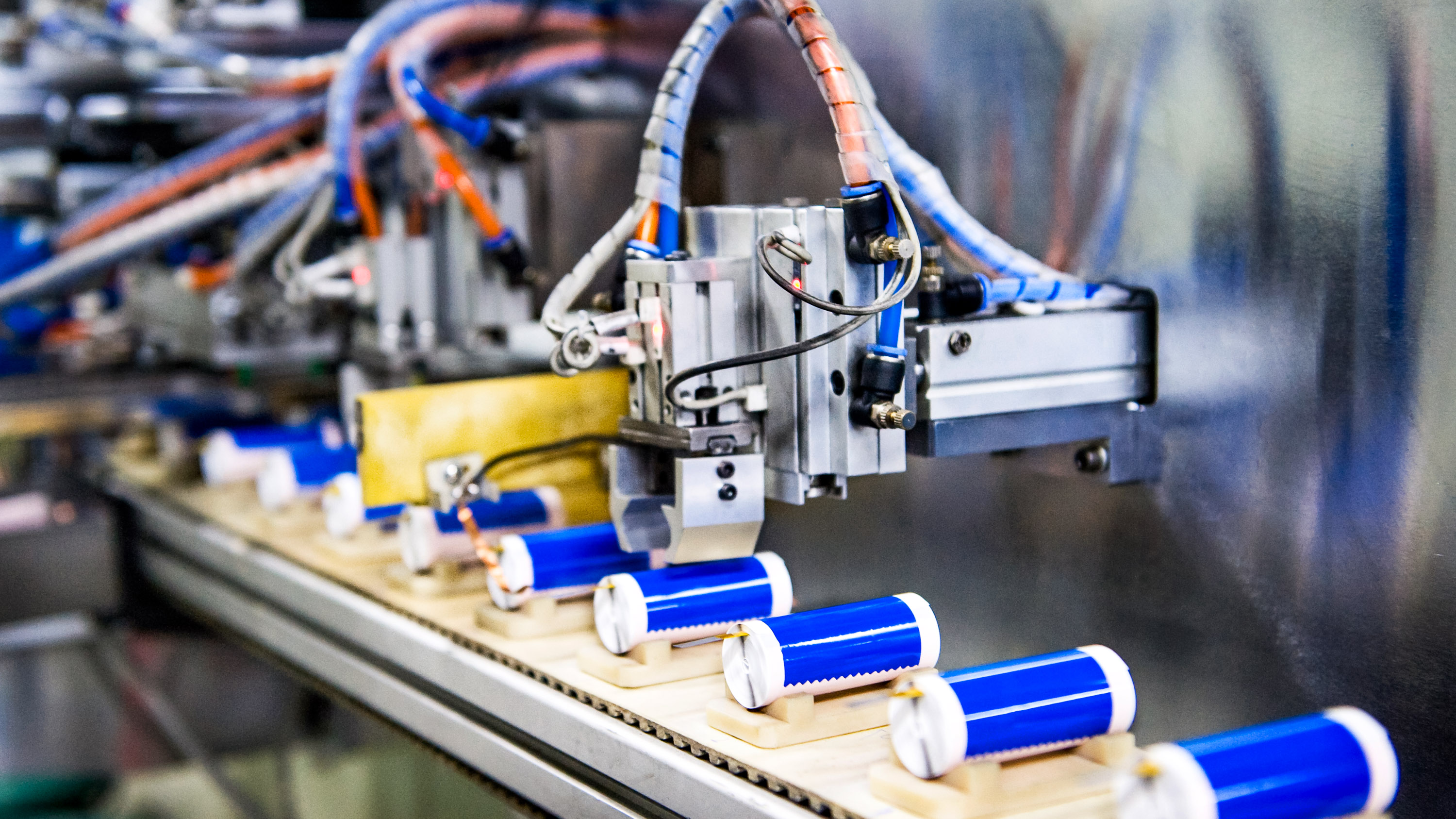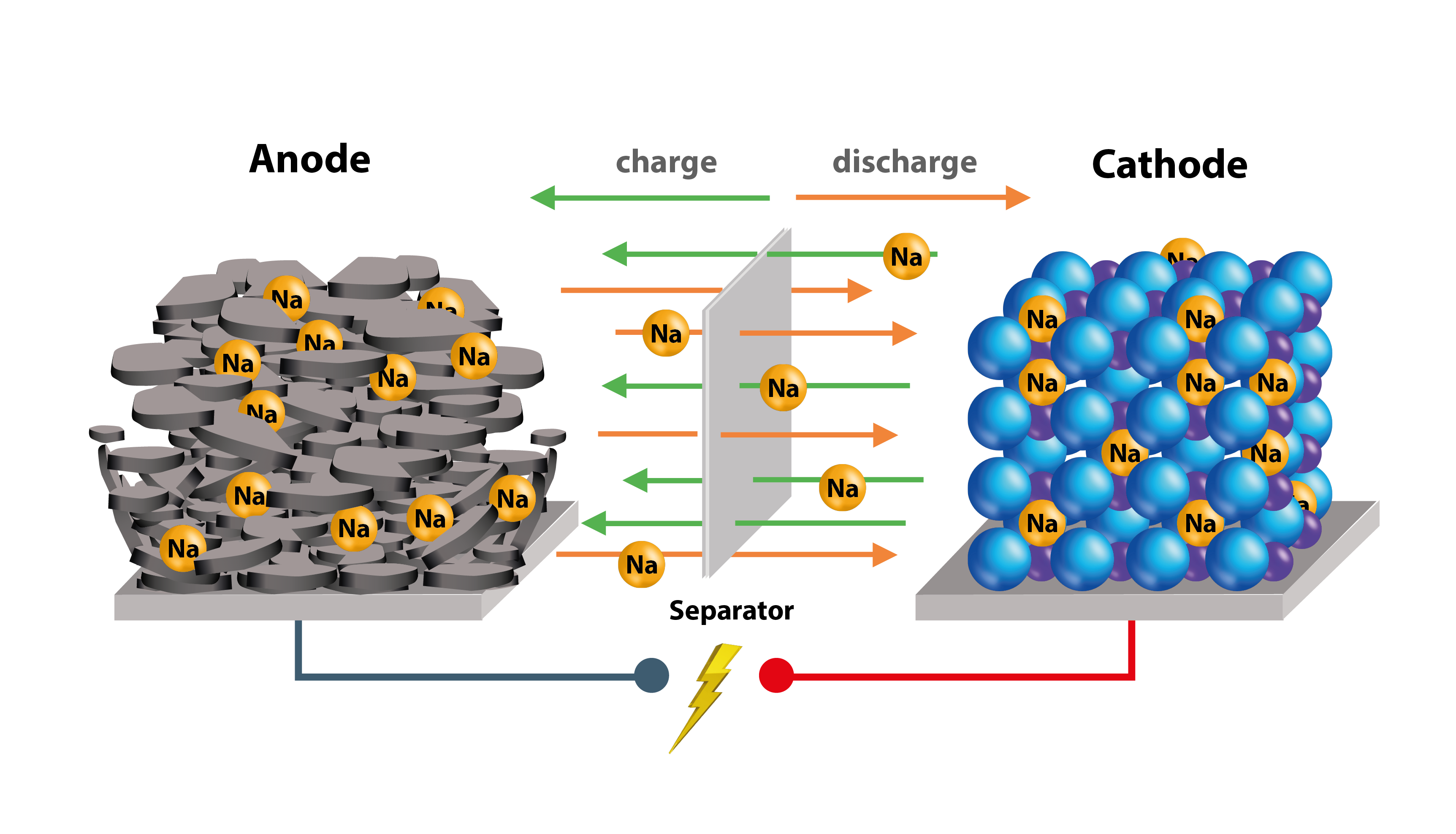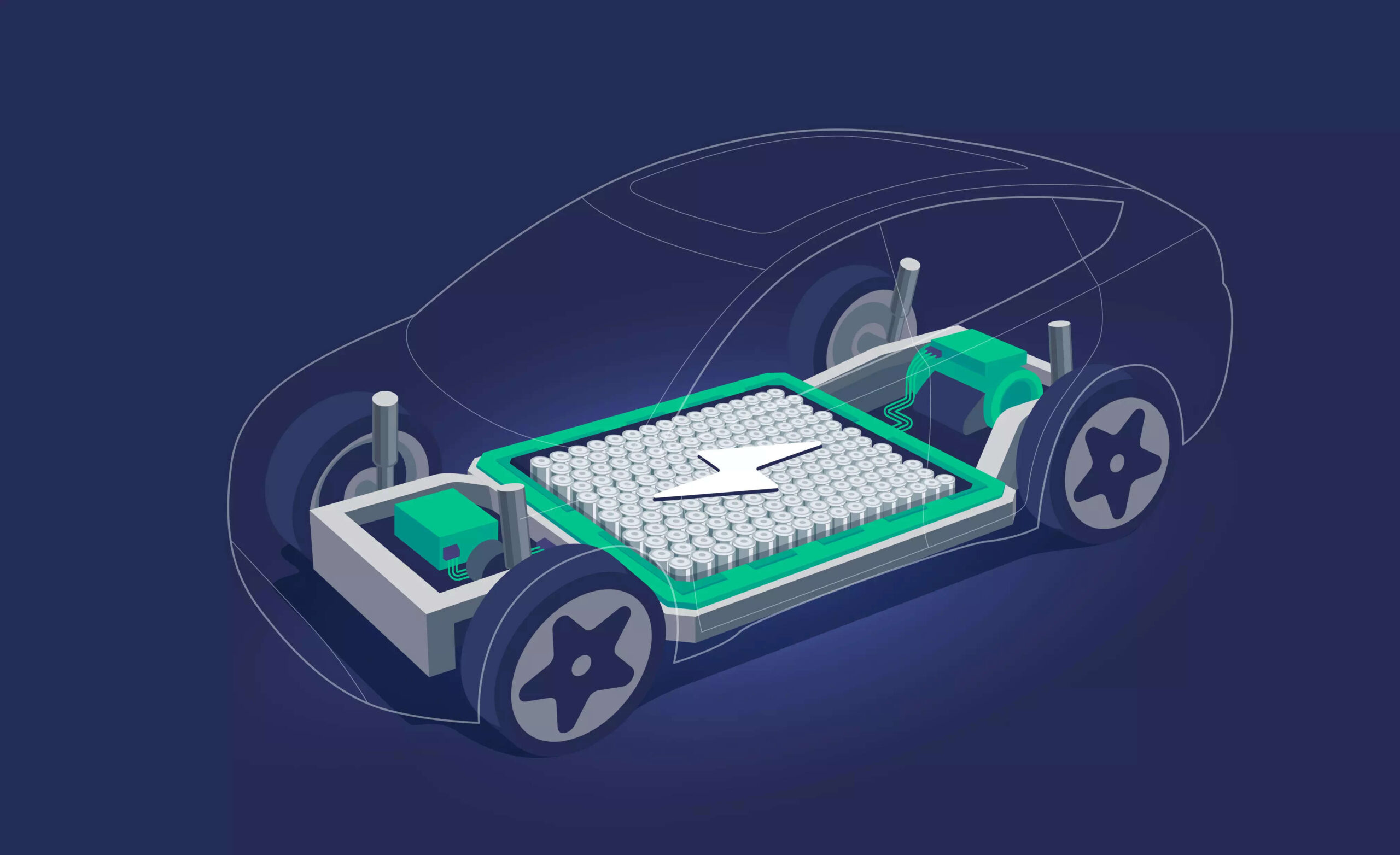Sodium-ion battery technology offers a promising alternative to lithium-ion batteries for electric cars. It uses abundant and cost-effective materials.
Electric Car Sodium-Ion Battery Technology are gaining attention for their potential benefits. They use sodium instead of lithium, offering a more sustainable option. Sodium is abundant and cheaper than lithium, making these batteries cost-effective. They also promise enhanced safety, as sodium-ion batteries are less prone to overheating.
This technology could reduce the environmental impact associated with lithium mining. While still in the development phase, sodium-ion batteries show great promise for the future of electric vehicles. Their adoption could lead to more affordable and eco-friendly electric cars, accelerating the transition to sustainable transportation.
Introduction To Sodium-ion Batteries
The electric vehicle (EV) industry is exploring new battery technologies. Sodium-ion batteries are emerging as a promising alternative. They offer unique benefits and address some limitations of current battery technologies.
Emergence In Ev Market
Sodium-ion batteries are gaining traction in the EV market. They are seen as a cost-effective and sustainable option. This is because sodium is abundant and cheaper than lithium.
EV manufacturers are investing in sodium-ion technology. This is due to the potential for lower production costs. Additionally, sodium-ion batteries have improved safety profiles.
- Abundant raw material
- Lower production costs
- Enhanced safety
Comparison With Lithium-ion
| Aspect | Sodium-Ion | Lithium-Ion |
|---|---|---|
| Raw Material | Sodium (abundant) | Lithium (scarce) |
| Cost | Lower | Higher |
| Energy Density | Lower | Higher |
| Safety | Higher | Moderate |
Sodium-ion batteries are less energy-dense than lithium-ion. They store less energy for the same weight. Yet, they are safer and cost less to produce.
Lithium-ion batteries dominate the market due to their higher energy density. They can power EVs for longer distances. But their production relies on scarce resources.
Both battery types have their pros and cons. The choice depends on specific needs and priorities. Sodium-ion technology may offer a viable alternative, balancing cost and safety.
Advantages Of Sodium-ion Batteries
Sodium-ion batteries are gaining attention in the electric car industry. They offer several benefits that make them appealing. Below, we explore key advantages of sodium-ion batteries.
Cost Efficiency
Sodium-ion batteries are cost-efficient compared to lithium-ion batteries. Sodium is abundant and easy to obtain. This makes the production of sodium-ion batteries cheaper. Lower production costs lead to more affordable electric cars. This can make electric vehicles accessible to more people.
Here’s a quick comparison:
| Battery Type | Cost | Abundance |
|---|---|---|
| Lithium-Ion | High | Limited |
| Sodium-Ion | Low | Abundant |
Environmental Impact
Sodium-ion batteries have a positive environmental impact. Sodium is more eco-friendly to mine. Lithium mining can harm the environment. Sodium mining has fewer negative effects. This makes sodium-ion batteries a greener choice.
Additionally, sodium-ion batteries are easier to recycle. This reduces waste and pollution. They also use less harmful chemicals. This further lessens their environmental footprint.
Key environmental benefits include:
- Less environmental damage from mining
- Easy recycling
- Fewer harmful chemicals
Challenges And Limitations
Electric car sodium-ion battery technology promises a greener future. Yet, it faces many challenges and limitations. Understanding these issues helps improve this promising technology.
Energy Density
Sodium-ion batteries have a lower energy density compared to lithium-ion batteries. This means they store less energy in the same space. Electric cars need a lot of energy to travel long distances. With sodium-ion batteries, cars might need larger or heavier batteries. This can affect the car’s performance and efficiency.
Cycle Life
The cycle life of sodium-ion batteries is another challenge. Cycle life refers to the number of charge and discharge cycles a battery can go through before it loses capacity. Lithium-ion batteries often have a longer cycle life. This makes them more durable and reliable for long-term use. Sodium-ion batteries need improvements in this area to be competitive.

Credit: www.aceongroup.com
Recent Developments
Electric car sodium-ion battery technology is advancing rapidly. Exciting new materials and research breakthroughs are driving progress. These developments promise better performance and sustainability.
Innovative Materials
Scientists are exploring innovative materials for sodium-ion batteries. These materials aim to improve energy density and charging times. One promising material is hard carbon. Hard carbon can store more energy than traditional materials.
Another exciting material is layered oxide. Layered oxide offers higher stability and longer battery life. Researchers are also testing polyanionic compounds. Polyanionic compounds can increase the battery’s efficiency and safety.
| Material | Benefits |
|---|---|
| Hard Carbon | Higher energy density |
| Layered Oxide | Increased stability |
| Polyanionic Compounds | Enhanced efficiency and safety |
Breakthroughs In Research
Recent research has led to significant breakthroughs. Scientists have developed a new electrolyte for sodium-ion batteries. This electrolyte improves the battery’s performance and lifespan.
Another breakthrough is the solid-state sodium-ion battery. Solid-state batteries are safer and more efficient than liquid-based ones. They also have a longer lifespan and can operate in extreme temperatures.
Researchers are also exploring nano-technology. Nano-technology can increase the battery’s capacity and charging speed. These breakthroughs make sodium-ion batteries a viable option for electric cars.
- New electrolyte for better performance
- Solid-state sodium-ion batteries
- Nano-technology for increased capacity
Manufacturing And Scalability
Sodium-ion batteries are a promising technology for electric cars. This section explores their manufacturing and scalability. Learn about the production processes and market readiness of these innovative batteries.
Production Processes
The production of sodium-ion batteries involves several steps. First, raw materials are sourced. These include sodium, carbon, and other elements. Next, the materials undergo processing. This creates the active components of the battery.
Manufacturing involves precise assembly of these components. The process ensures high performance and safety. Quality control is crucial at every stage. This guarantees that each battery meets strict standards.
| Step | Description |
|---|---|
| Material Sourcing | Gathering raw materials like sodium and carbon. |
| Processing | Transforming raw materials into active components. |
| Assembly | Putting together battery components with precision. |
| Quality Control | Ensuring each battery meets high standards. |
Market Readiness
Sodium-ion batteries are nearing market readiness. Many companies are investing in their development. These batteries offer several advantages. They are cost-effective and use abundant materials.
Scalability is a key factor. Manufacturers are working to produce these batteries on a large scale. This will make them more accessible for electric cars. The future looks bright for sodium-ion battery technology.
- Cost-Effective: Uses cheaper materials than lithium-ion.
- Abundant Resources: Sodium is more readily available than lithium.
- Scalable Production: Easier to manufacture in large quantities.
- Environmental Impact: Less harmful to extract sodium.

Credit: www.technologyreview.com
Impact On Ev Industry
The introduction of Sodium-Ion Battery Technology in electric cars is set to revolutionize the EV industry. This innovative technology promises significant changes that could reshape the future of electric vehicles.
Cost Reduction
Sodium-Ion batteries are cheaper to produce. The materials used, such as sodium, are more abundant. This abundance leads to lower raw material costs. Compared to lithium, sodium is more widely available.
Production costs decrease with the use of sodium. Manufacturers can produce batteries at a reduced price. Lower production costs translate to lower prices for consumers.
Wider Adoption
Lower prices make electric vehicles more accessible. More people can afford to buy EVs. Widespread adoption of EVs becomes possible. This can lead to a significant reduction in carbon emissions.
Charging infrastructure will also improve. With more EVs on the road, there will be more charging stations. This makes owning an EV more convenient.
Governments may offer incentives to buy sodium-ion powered EVs. Incentives further boost the adoption rate.
| Benefit | Details |
|---|---|
| Cost | Lower due to abundant materials |
| Adoption | Increased due to affordability |
| Infrastructure | More charging stations |
| Environmental Impact | Reduced carbon emissions |
- Cheaper materials
- Reduced production costs
- More affordable EVs
- Higher adoption rates
- Better charging infrastructure
- Government incentives
Future Prospects
The future of electric cars looks bright with sodium-ion battery technology. This innovation promises a cleaner, more efficient way to power vehicles. Let’s explore the potential improvements and long-term viability of this technology.
Potential Improvements
Sodium-ion batteries offer several potential improvements over traditional lithium-ion batteries.
- Cost-Effectiveness: Sodium is cheaper than lithium, reducing overall costs.
- Abundance: Sodium is more abundant, making it easier to source.
- Safety: Sodium-ion batteries are less prone to overheating.
These improvements can make electric cars more affordable and safer for everyone.
Long-term Viability
Long-term viability is crucial for any new technology. Sodium-ion batteries show promise in this area too.
- Environmental Impact: Sodium mining is less harmful than lithium mining.
- Recyclability: Sodium-ion batteries are easier to recycle.
- Energy Density: Future research may improve their energy density.
These factors contribute to the long-term success of sodium-ion batteries in electric cars.

Credit: www.flashbattery.tech
Frequently Asked Questions
Will Sodium-ion Batteries Be Used In Evs?
Yes, sodium-ion batteries could be used in EVs. They offer a cost-effective alternative to lithium-ion batteries. Research is ongoing to enhance their efficiency and energy density.
Is Sodium-ion Better Than Lithium?
Sodium-ion batteries are cheaper and more abundant than lithium-ion. Lithium-ion batteries, however, offer higher energy density and longer lifespan.
Why Aren’t Sodium-ion Batteries Used?
Sodium-ion batteries aren’t widely used due to lower energy density and shorter lifespan compared to lithium-ion batteries. They also face challenges in commercial scalability and efficiency.
What Are The Disadvantages Of Sodium-ion Batteries?
Sodium-ion batteries have lower energy density compared to lithium-ion batteries. They are also heavier and bulkier. Limited cycle life and performance in cold temperatures are other drawbacks. High production costs and less developed technology infrastructure add to the disadvantages.
What Is Sodium-ion Battery Technology?
Sodium-ion batteries use sodium ions to store energy, offering a cheaper, more sustainable alternative to lithium-ion batteries.
Conclusion
Sodium-ion battery technology is revolutionizing electric cars. It promises affordability, sustainability, and efficiency. This innovation could make electric vehicles more accessible. The future of transportation looks brighter with this advancement. Stay updated as sodium-ion batteries continue to evolve and reshape the automotive industry.
